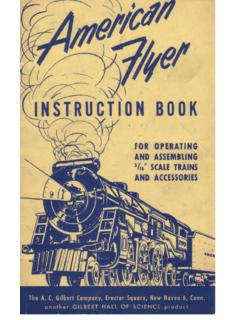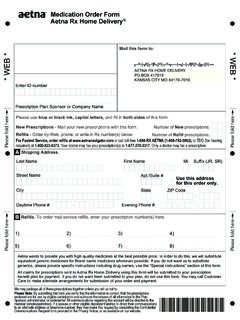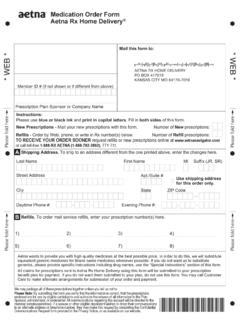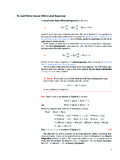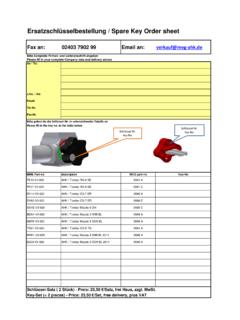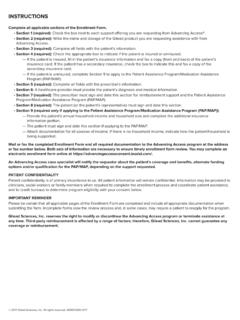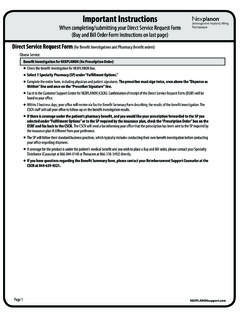Transcription of c rx r' w - thortrains
1 C 'fa. "r' wFOREWORDTHIS handbook was prepared at the Military IntelligenceTraining Center, Camp Ritchie, Maryland, and is designedto provide a ready reference manual for intelligence person-nel in combat operations. The need for such a manual wasso pressing that some errors and omissions are anticipated inthe current edition. Any suggestions as to additions, orerrors noted, should be reported directly to the Comman-dant, Military Intelligence Training Center, for correctionin later --43---1 handbook ON german army IDENTIFICATIONLeft to right: Soldier (noncommissioned officer candidate-note silver cord across outer edge of shoulderstrap), air force captain (belongs to staff, probably Air Ministry), SS Obergruppenfiihrer Josef Diet-rich (commander SS Division Adolf Hitler and chief of SS Oberabschnitt Ost), Hitler, Reichsfihrer SSHeinrich Himmler (head of the SS and german police).WAR DEPARTMENT,WASHINGTON, APRIL 9, ON german army IDENTIFICATIONSECTION I.
2 General. ParagraphIdentification of german military and semi-military organizations --- _____ 1II. german Order of 2 Purpose and scope ---__ ___---- ----- 3 III. The german army (Das Deutsche Heer).Uniforms and equipment-------_------- 4 german army identifications of specialists - -5 Colors of arms of service (Waffenfarbe) ___- _ _ 6 Enlisted men (Mannschaften)__ _____ 7 Noncommissioned officers (Unteroffiziere) .-- 8 Officers (Offiziere) 9 german identification tag (Erkennungsmarke)_ 10"Wehrmacht" officials (Wehrmachtbeamte) _ 11"Ersatz" system_------- ------------- -12 Pay book (Soldbuch) ----__---------- 13IV. The german Air Force (Luftwaffe).Uniform and insignia---------------------- 14 Colors of arm of service (Waffenfarben) _----- -15 Special uniforms and insignia-------------- 16 Insignia of rank-flying uniform ---__ --_ --- 17 Insignia of flying personnel of german Luft-waffe and army -------------_------ -- 18 Corps of Engineers------------------------ 19 Corps of Navigational Experts_----------- 20 Medical Corps--------------------------- 21 Musicians----------------------- ------ 22V.
3 The german Navy (Die Deutsche Kriegsmarine).General------------------- -------------- 23 Insignia of rank of Navy (Dienstgradabzeichender Kriegsmarine)----------------------- 24 handbook ON german army IDENTIFICATIONP aragraphSECTION VI. Police, semimilitary and political organizations(Deutsche Polizei, Halbmilitarische und Poli-tische Verbinde). german police (Deutsche Polizei) ----____ 25 Semimilitary and political organizations___ 26 Uniforms of armed SS (Waffen SS)___ _ 27 Insignia of rank of the National Labor Serv-ice (Dienstgradabzeichen des Reichsar-beitsdienstes R. A. D.) ---__------ _ 28 National Socialist Organizations (National-sozialistische Organisationen)_____ 29 Insignia of rank of SA, SS, and of the NSKK(Dienstgradabzeichen der SA, SS, und derNSKK) _____-------------------30 Insignia on uniform of the german police (Uni-form-Abzeichen der Deutschen Polizei) __ 31 Command post flags (Kommandoflaggen) - -32 Field insignia and flags of the National So-cialist german Labor Party (Feldzeichenund Fahnen der NSDAP) ____ -33 Insignia of rank of Hitler Youth (Dienst-gradabzeichen der Hitlerjugend) --____ _ 34 Rank insignia of the political leaders (Dienst-gradabzeichen der Politischen Leiter)___ 35 PageAPPENDIX.
4 Traffic signs (Verkehrszeichen) _____ ON german army IDENTIFICATTON 1-3 SECTION IGENERALP aragraphIdentification of german military and semimilitary organizations- -_____ 11. identification of german military and It is second nature to make comparisons. Thistendency may well be used in associating german insignia of rankwith our own; however, the student will find that direct equivalents,while existing in some instances, are not the rule. It is well to ap-proach the subject with this fact in mind. The outline presentedis as nearly accurate and complete as available sources permit (upto January 1, 1943).b. The student must possess sufficient adaptability to make cor-rections and adjustments if and when the need for them german army and german semimilitary organizations are veryflexible in their structure. Uniforms, equipment, and insignia areoften changed, for a multitude of reasons, without advance noticeto the IIGERMAN ORDER OF BATTLEP aragraphDefinition--_____----- ____----------- ----------- _------------- 2 Purpose and scope----------------------------------- -------------- 32.
5 By the term "Order of Battle," is meant allknown information of the enemy Order of Battle information is generally divided into two parts:Order of Battle---Strength, and Order of Battle-Location.(1) Order of Battle-Strength is a compilation of all of the units ofthe enemy armies and of those organizations of the other services, suchas the Navy and Air Force, which operate with the army in the field.(2) Order of Battle-Location gives the disposition of known enemyarmy units and includes all information as to actual unit locations,movements, and concentration areas, as well as changes in organiza-tion, equipment, and Purpose and Publications of data with respect toOrder of Battle information regarding the german army , are gener-ally based on the various german divisions. This is true because thedivision is the unit in the german army which ordinarily does notchange. In the case of a german infantry division, for example, handbook ON german army identification once it has been composed of certain infantry and artillery regiments,those regiments ordinarily do not leave the division.
6 This means thatwhen a single regiment of a known german division is identified, thepresence of the other previously identified units of that division can beinferred with reasonable assurance of It is this means of enemy unit identification which makes Orderof Battle information of such great practical value to intelligence offi-cers. Publications based on collected Order of Battle data on theGerman army ordinarily show the composition of known Germandivisions. They may be cross-indexed in such a way as to enable onewho has identified a particular german regiment to identify the divisionof which it is a part and also the other units included in the same divi-sion. Naturally, information of this kind is subject to constant sup-plement, confirmation, and correction as individual units are iden-tified. As a result, new editions of publications based on Order ofBattle information are issued In addition to identifying information such as that indicatedabove, publications based on Order of Battle information may con-tain data such as the following, which are of interest to intelligenceofficers: engagements and campaigns in which enemy units havetaken part, their battle reputations, morale, and probable casualties;enemy military symbols and abbreviations; methods of training andmobilizing the enemy army ; lists of senior army officers with theircommands; an outline of the high command and general bases of or-ganization of the enemy army ; uniform identifications; and descrip-tions of identification tags and pay Publications based on Order of Battle information contain datawhich identify the home stations or areas in Germany from which thesoldiers in particular units originate.
7 Germany is divided into terri-torial administrative commands called Wehrkreise, which correspondto our service commands. The mobilization of the german armedforces was accomplished within the administrative framework of theWehrkreise. It is important for intelligence officers to know fromwhat part of Germany particular units come, because individuals inthose units as a whole act according to local patterns of IIITHE german army (DAS DEUTSCHE HEER)ParagraphUniforms and equipment _____ -_____------- ---_----- 4 german army identifications of specialists---__----------------------- 5 Colors of arms of service (Waffenfarbe)____---------- ------------- ON german army identification 4 ParagraphEnlisted men (Mannschaften) -------------------------------- 7 Noncommissioned officers (Unteroffiziere)----_--_---------------- --- 8 Officers (Offiziere)-----__--------------___----- ----------------- 9 german identification tag (Erkennungsmarke) ---------------------- 10"Wehrmacht" officials (Wehrmachtbeamte) -------------___ --------- 11"Ersatz" system.
8 ----------------------------------___ 12 Pay book (Soldbuch)___------------------------- --- ----------_ 134. Uniforms and Field uniform (Feldanzug)-(1) Blouse (Feldbluse).-Officers and enlisted men wear the sameblouse, which is made of greenish-gray cloth with a collar of a darkershade. The collar is normally worn fastened up tightly around theneck, but under field conditions the blouse is sometimes worn openaround the neck, with the collar folded back. No uniform shirt isworn under the blouse.(2) Trousers (Hosen).-Dismounted officers wear trousers of graycloth which are tucked into half length black boots. The sameequipment is worn by the enlisted men. Mounted officers and enlistedmen wear gray trousers with leather facings, and riding boots.(3) Overcoat (Mantel).-The overcoat is double-breasted and madeof gray cloth. The same type of coat is worn by officers and enlistedmen.(4) Field cap (Feldmiitze).-The field cap is made of greenish-graycloth, can be worn under helmet, and is worn by officers and enlistedmen of all troops except mountain units and some personnel of thearmored troops.
9 The officer's field cap is of better quality and hassilver piping along the top seam and top edge of the turn-up. Twoinsignia are embroidered on the front of the field cap: the Reichsko-karde, which is just above the lower edge of the cap, and the nationalinsignia, which is just below the upper edge.(5) Steel helmet (Stahlhelm).-The steel helmet is worn by officersand men in the field. It is made of seamless sheet steel and is paintedinside and out with rust-resisting gray matt paint. Lugs are drilledon either side of the helmet so that a face shield can Paintedon the right side of the helmet is a shield with the national on the left side of the helmet is a shield with the nationalinsignia (no national colors in some recent instances).(6) Pack (Tornister).-The pack carried by the foot soldier looksalmost square when in position on a soldier's back. It is made ofheavy canvas with leather binding around the edges and is held inposition by leather straps.
10 Blankets, shelter-half, and camouflagesheet (if present) are rolled into a long roll which is buckled over thetop and sides of the pack. The pack (Tornister) is replaced by ON german army identification haversack (Rucksack) in the case of mountain troops. The haversackis also made of canvas, but is of nonrigid construction.(7) Other equipment includes canteen, gasmask, gas cape, entrenching tool, and side arms. The gas cape is aprotection against poison gas. (Cover made of impregnated cloth.)b. Field uniform of special (1) Armored force (Panzertrup-pen).--Personnel of tank units wear a loose-fitting black uniform andsteel helmet. (Collar patch of black uniform has skull and twocrossed bones as insignia.) Panzerkraftwagen 38 T and mediumarmored troop-carrier personnel wear the same uniform but with theblack beret. Beret shows national insignia and Reichskokarde withoak leaves.(2) Mountain troops and Mountain (Jager) Battalions. (Gebirgstruppenund Gebirgsjagerbataillone).
